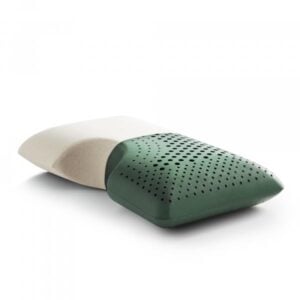10 Tips and Tricks to Find the Most Soothing Sounds for Sleep
Why Soothing Sounds Are Essential for Quality Sleep
Finding the most soothing sounds for sleep can drastically enhance your nightly rest. The right auditory backdrop creates an environment conducive to relaxation, making it easier to fall asleep and stay asleep. Various sound options available today can aid in this endeavor, each known for its unique benefits:
– White noise
– Pink noise
– Brown noise
– Nature sounds (like ocean waves or rain)
– Calming music
In a world filled with distractions—from traffic noise to barking dogs—the importance of soothing sounds is paramount. The right soundscape can signal your brain that it’s time to unwind, fostering an atmosphere that supports deeper, more restorative sleep.
I’m Ben Trapskin, the founder of Yawnder. Having struggled with sleep myself, I discovered that integrating soothing sounds into my routine made a remarkable difference. My goal is to help you unlock the tranquility of restful sleep through effective auditory environments.
Understanding Different Types of Noise
To effectively utilize the most soothing sounds for sleep, it is beneficial to understand the unique characteristics of each type of noise.
White Noise
White noise is essentially a consistent sound that encompasses all frequencies within the range of human hearing. It serves to mask sudden disturbances in your environment, akin to the sound of a fan or an airplane engine, providing a steady auditory backdrop for sleep.
Example Sounds:
– Fan noises
– Airplane drones
Benefits:
– Masks disruptive sounds
– Creates a stable sound landscape
Pink Noise
Softer than white noise, pink noise features a balanced sound distribution, offering more energy at lower frequencies. Imagine the gentle rhythm of rain pattering against your roof or leaves rustling in a breeze.
Example Sounds:
– Rain on the roof
– Rustling leaves
Benefits:
– More natural and comforting
– Aids in relaxation and promotes sleep
Brown Noise
Brown noise, also known as Brownian noise, contains deep, rich sounds, similar to distant thunder or a roaring waterfall. This may be particularly soothing for some, contributing to both sleep and focus.
Example Sounds:
– Waterfalls
– Distant thunder
Benefits:
– Deep and calming
– Useful for enhancing concentration while promoting sleep
Green Noise
Often overlooked, green noise captures mid-frequency sounds prevalent in nature, such as a tranquil brook or the gentle ambiance of a forest.
Example Sounds:
– Babbling brooks
– Forest environments
Benefits:
– Mimics indoor and outdoor natural sounds
– Creates a peaceful atmosphere for sleep
Black Noise
Though true silence (black noise) is rare in our noisy world, this sound type focuses on voids with occasional random sounds, providing a uniquely tranquil environment for those who can achieve it.
Example Sounds:
– Rare moments of silence
– Sporadic nature sounds
Benefits:
– Ideal for those who prefer a calm auditory landscape
– Excellent for reducing anxiety and enhancing sleep quality
By familiarizing yourself with these various types of sounds, you can identify which resonates best with your sleep preferences.
Nature Sounds for Sleep
Natural soundscapes provide some of the most soothing sounds for sleep, connecting us to the environment and offering a peaceful escape.
Ocean Waves
Imagine lying on a serene beach, the soothing rhythm of ocean waves matching your breath. The gentle ebb and flow can effortlessly lull you into a peaceful state, synchronizing with your body’s natural rhythms.
Rain and Water Sounds
The rhythmic patter of rain or the gentle rush of a stream can transport you to a peaceful oasis. These sounds evoke a sense of comfort and coziness, effectively drowning out disruptive noises and promoting serenity.
Forest Sounds
For nature enthusiasts, forest sounds offer a delightful escape. The rustle of leaves and distant chirps create a symphony, making you feel as if you’re camping under the stars, far from daily stresses.
These nature sounds connect deeply with our primal instincts, evoking feelings of calmness and safety. Explore different natural environments to discover which soundset most enhances your sleep quality.
Music and Sleep
Calming Music
Music holds immense power over our emotions and physiological states. Calming melodies, particularly those with slow rhythms, can slow your heart rate and promote muscle relaxation, making them effective for sleep.
Key Benefits:
– Slows heart rate, preparing the body for sleep
– Reduces muscle tension
– Eases anxious thoughts
Meditation Music
Incorporating meditation music helps create a soothing mental space. Guided meditation often uses gentle rhythms to ease the transition from wakefulness to sleep.
Key Benefits:
– Helps focus the mind, reducing anxiety
– Aids in consistency, signaling bedtime
– Enhances the overall quality of your sleep routine
Sleep Stories and ASMR
Sleep Stories
Designed specifically to aid sleep, sleep stories feature gentle narration and simple plots that don’t engage your mind too much, helping you drift off peacefully.
ASMR Sounds
Autonomous Sensory Meridian Response sounds, or ASMR, include soft whispers or gentle noise, creating a calming effect for many listeners. These intimate sounds can feel nurturing and help ease anxiety.
Binaural Beats and Theta Waves
Binaural Beats
An auditory illusion generated when two slightly different frequencies are played in each ear, binaural beats can help calm the mind and promote relaxation.
Theta Waves
These slow-frequency brainwaves facilitate deep relaxation and connection to memories, aiding in a smoother transition to sleep. Exploring theta wave soundscapes can be a game changer.
Conclusion
Creating a peaceful sleep environment with the most soothing sounds for sleep can drastically enhance your overall sleep quality. By integrating different sound types—white noise, nature sounds, and calming music—into your nighttime routine, you can develop a haven conducive to relaxation.
Explore various auditory options and find the sound that resonates with you. With commitment and experimentation, you’ll soon discover the path to improved sleep. At Yawnder, we offer a selection of sleep accessories designed to optimize your sleep environment, ensuring that every night can be a truly restful one.
Are you ready to transform your sleep experience? Discover our range of sleep solutions, from ambient sound machines to soothing mattresses. Embrace the power of sound and sleep better to live better!


















